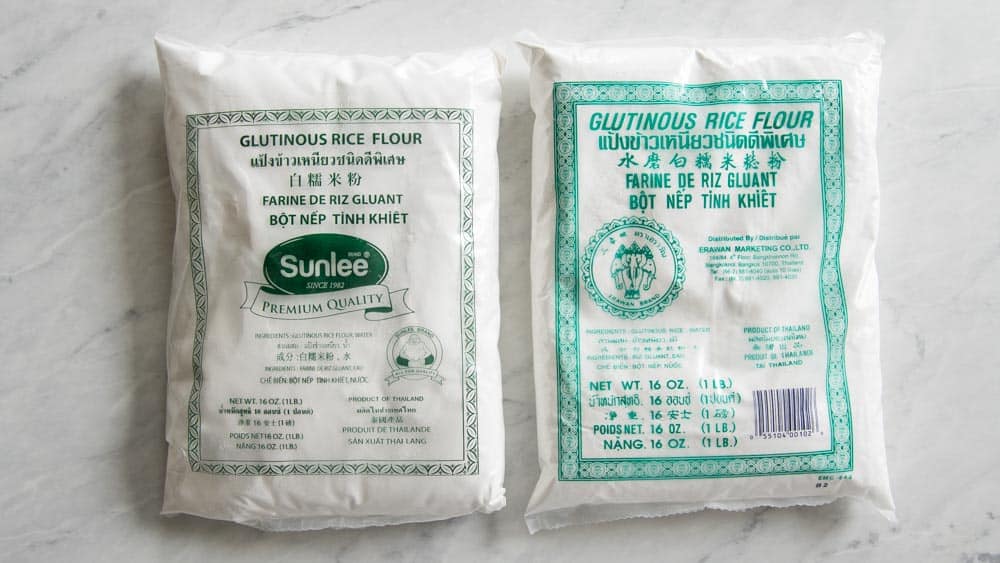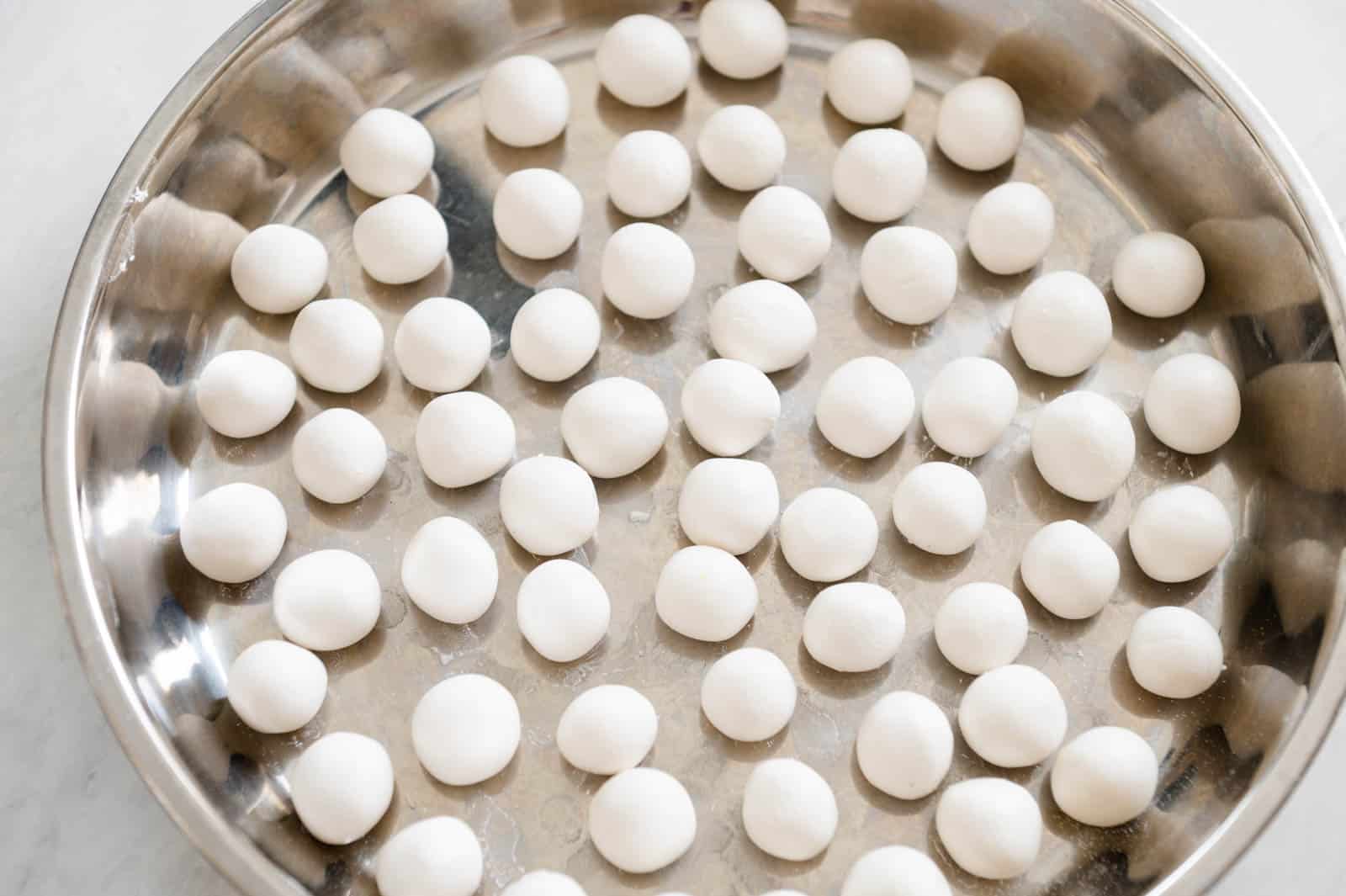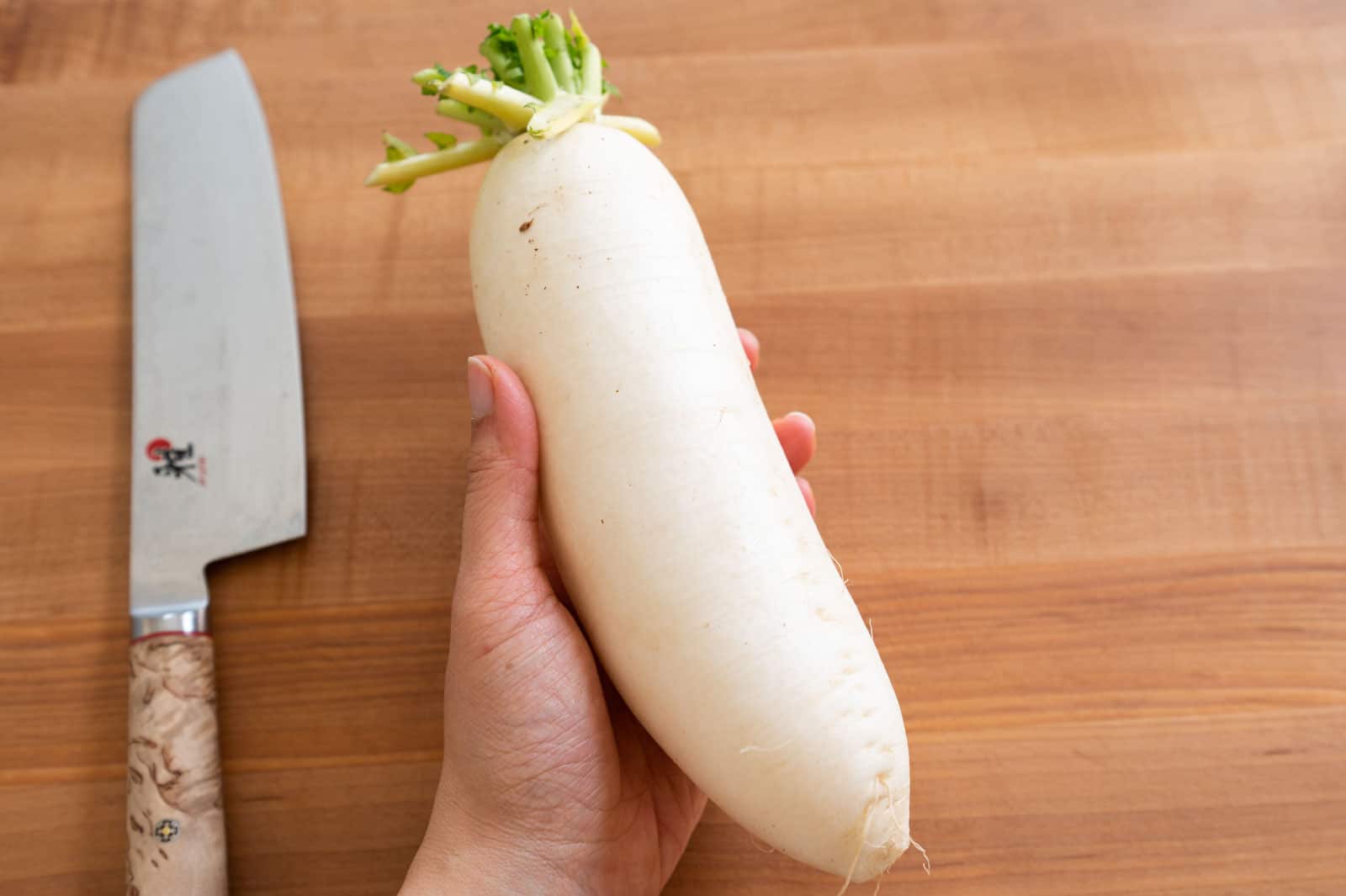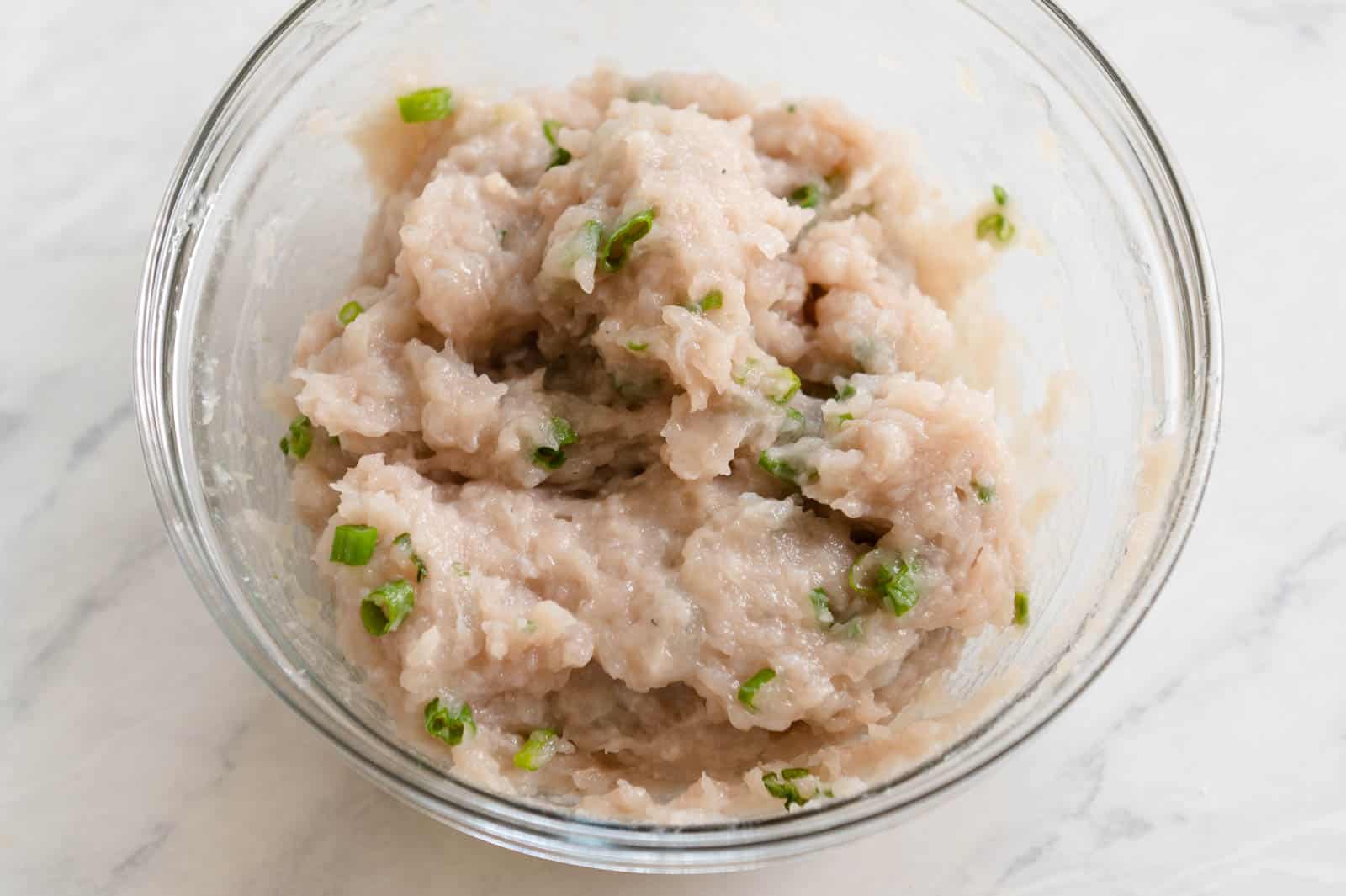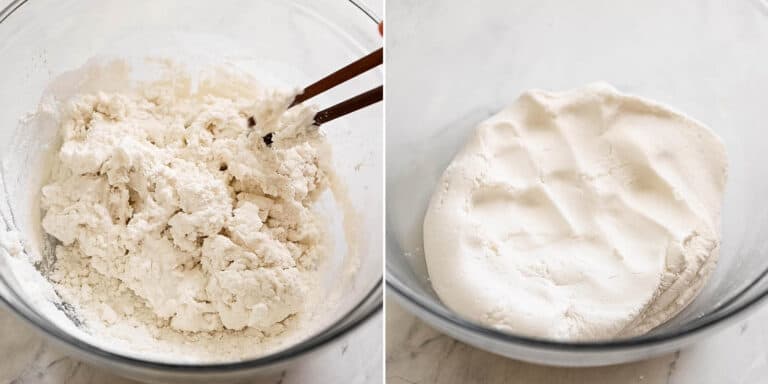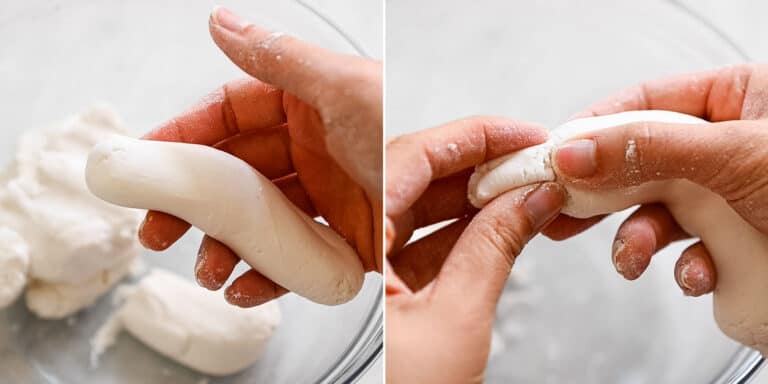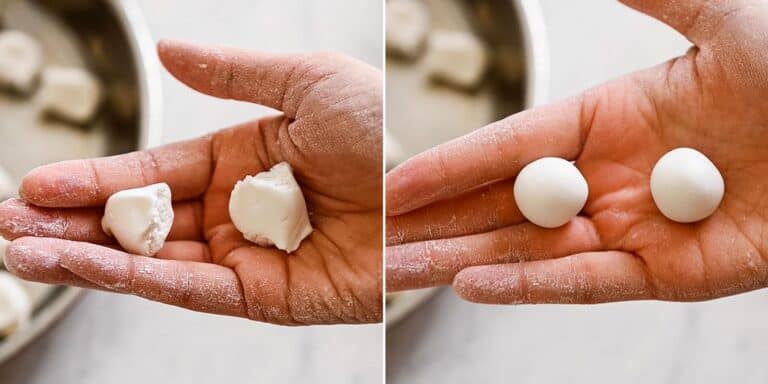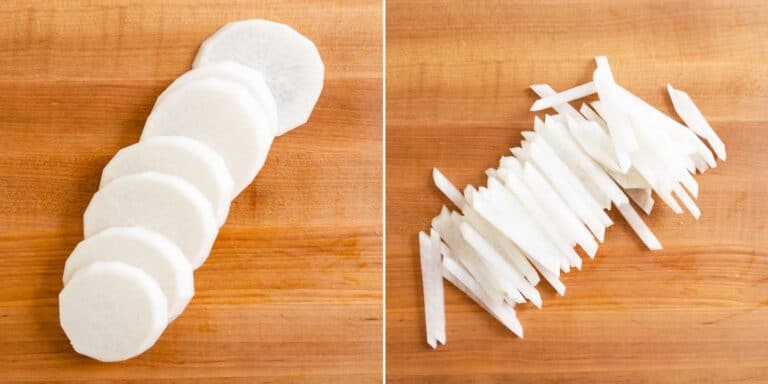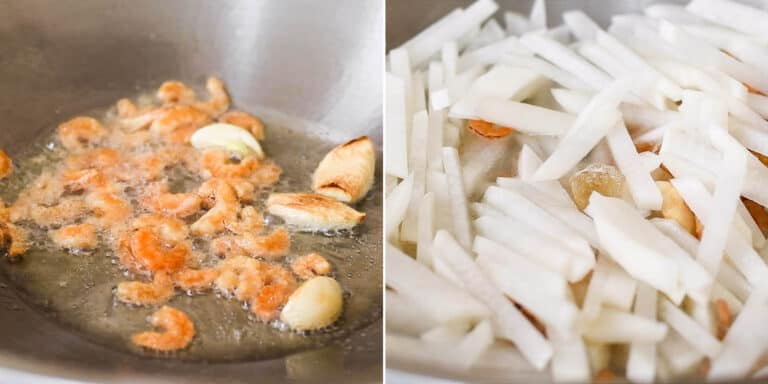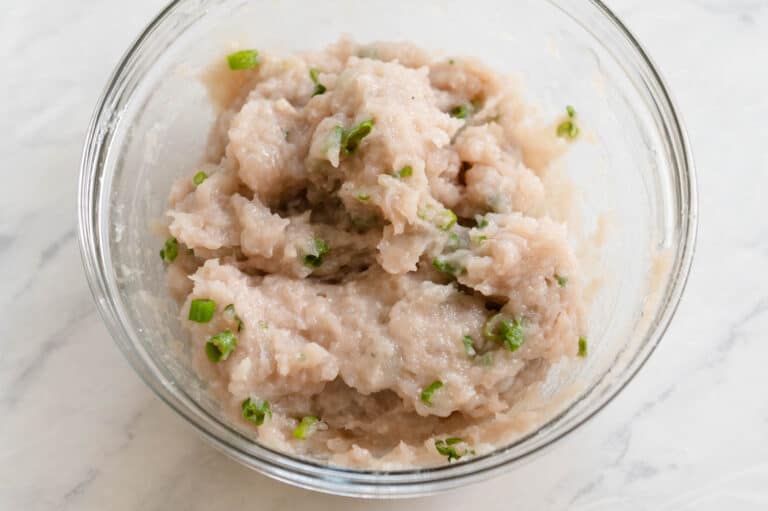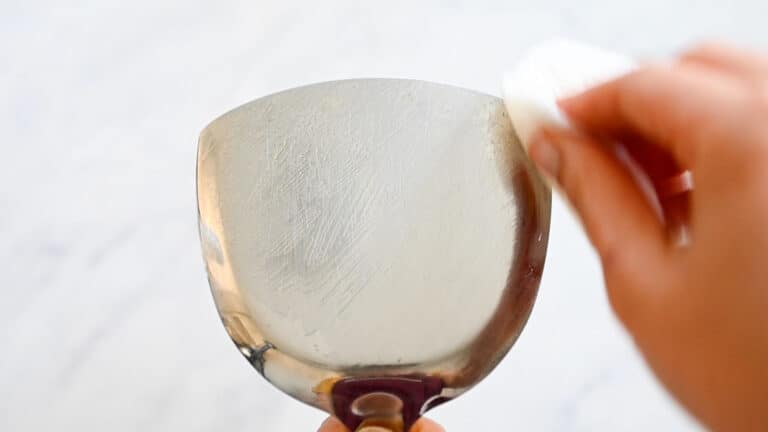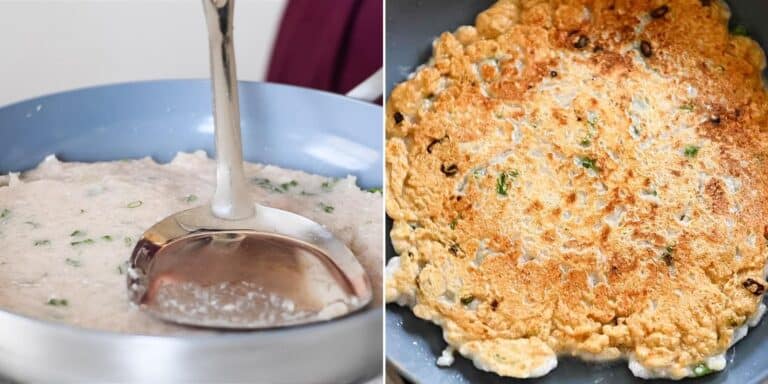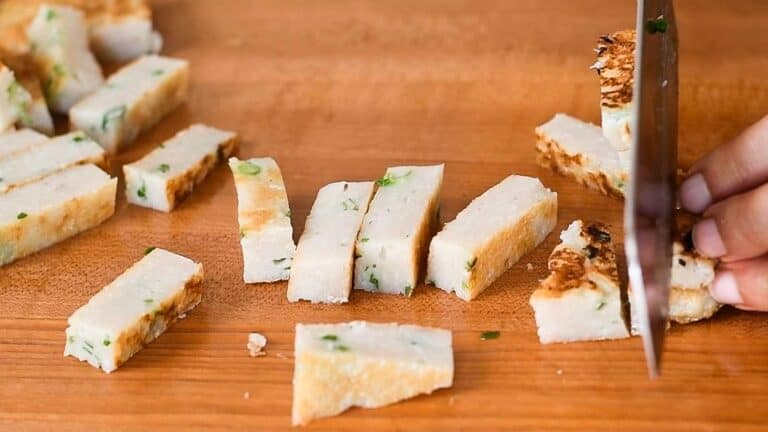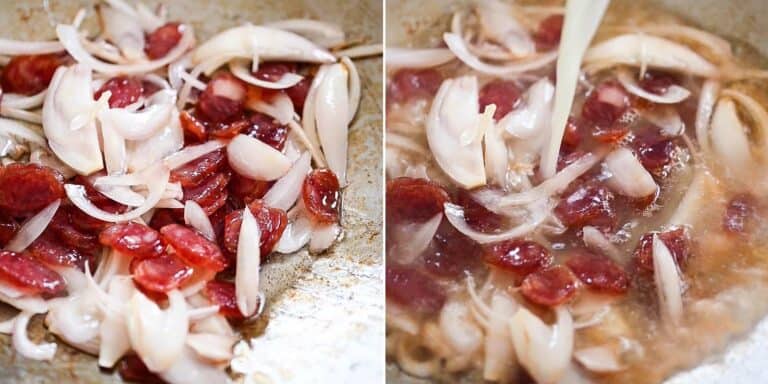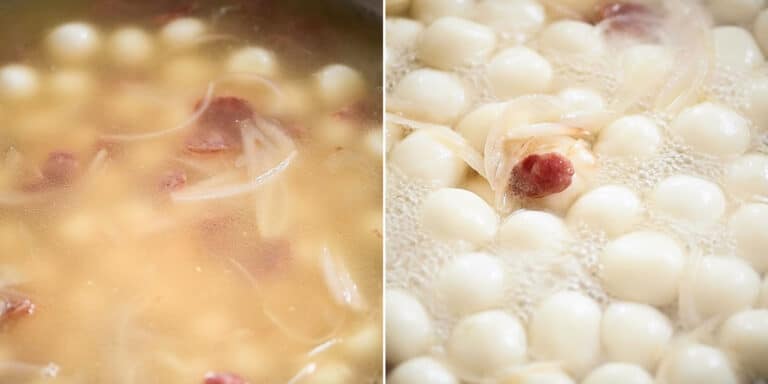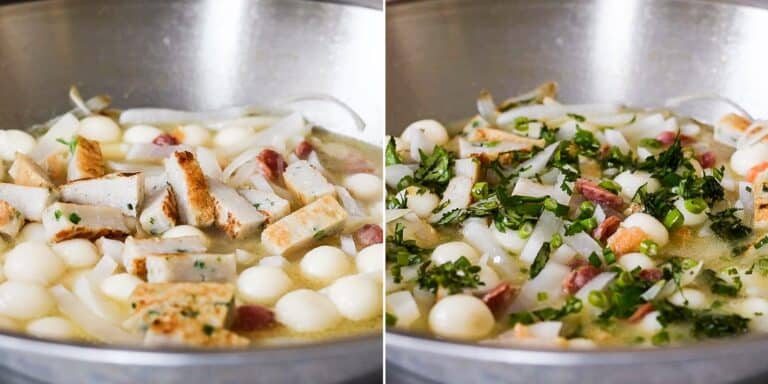During winter solstice, families gather together to make and eat tang yuan (湯圓 / 汤圆) for dongzhi. (Tang yuan, which is how it’s most commonly spelled in English, is based on the Mandarin pronunciation; in Cantonese, it is tong yoon.) Tang yuan are small circular dumplings made with glutinous rice flour and water. The circular shape of the dumplings symbolizes one’s family coming together (or tuanyuan, 團圓 / 团圆). Some families make the sweet version of tang yuan. However, in Toisan (台山), where my family is from, people often cook tang yuan in a savory broth with seafood, vegetables, and meat. Mama Lin typically prepares a broth that is flavored with chicken stock, dried shrimp, Chinese sausage, shallots/onions, and sometimes lean pork. To serve, she’ll top the bowl of tang yuan with cooked daikon, fried fish cake, scallions, and cilantro. It is the ultimate winter comfort food! By the way, most traditional Chinese holidays are based on the lunar calendar. As a result, Chinese winter solstice celebrations may be on the same day or a day later than winter solstice based on the Gregorian calendar.
SAVORY TANG YUAN COOKING NOTES
USING GLUTINOUS RICE FLOUR
Do not use regular rice flour, as the rice balls will not turn chewy. If glutinous rice flour is difficult for you to find, you can try using sweet rice flour (such as Mochiko). Note that sweet rice flour/Mochiko tends to be a coarser grind compared to Thai-style glutinous rice flour, so the rice balls won’t be as silky soft.
MAKING TANG YUAN DOUGH WITH ROOM TEMP WATER
When Mama Lin started learning how to cook tang yuan, she made the dough with boiling hot water. Hot water turns glutinous rice flour into a very stretchy, pliable dough. If you ever make tang yuan with filling, you must make the dough with hot water so that you can easily manipulate the dough around the filling. Because this style of savory tang yuan has no filling, you do not need to make the dough with hot boiling water. For the past decade or so, my mom has been using room temperature water to make the dough because it is a lot easier to handle. This “cold-water dough,” as my mom calls it, is much easier to knead and the dough doesn’t stick to your hands when you roll it into balls. Once cooked, the texture of the tang yuan made with hot water or cold water are about the same. The drawback of the cold-water dough is that the raw rice balls can stick to each other or the plate they’re sitting on. As you roll out the balls and transfer them to a plate, make sure the balls don’t touch each other. When you are ready to drop the rice balls into the broth, invert the plate and gently brush them off. You’ll see that a tiny bit of dough will be stuck to the plate, but don’t stress about it. Mama Lin, ever the resourceful one, scrapes off and collects the dough to make one last tang yuan.
COOKING THE DAIKON
One key element to Mama Lin’s savory tang yuan is daikon (which we call 蘿蔔/萝卜, lo bak in Cantonese). Mama Lin prefers using what she calls “Chinese daikon,” which is long and plump versus “Japanese daikon,” which is long and thin. She claims that the Japanese variety of daikon is more bitter, though I can’t say I’ve noticed much difference. To cook the daikon, she boils it with dried shrimp for umami flavor, as well as a small chunk of rock sugar (冰糖, bing tang). The sugar helps balance out the slight bitter flavors of daikon. Rock sugar can be difficult to find, so you can replace that with 2 teaspoons of sugar.
FISH PASTE
My mom always buys fish paste from a fishmonger in Chinatown or Asian supermarkets. In Sacramento, I’ve been able to find some at 99 Ranch Market. I like to add scallions to the fish paste to give them extra flavor. If fish paste is difficult to find, you can replace them with fish balls (found in frozen sections of Asian grocery stores) or Japanese-style fried fish cake (also found in Asian grocery stores).
CAN YOU MAKE THE TANG YUAN AHEAD?
Yes! Line a large plate with a sheet of parchment paper. Then, arrange the uncooked tang yuan over the lined plate, making sure the balls don’t touch each other. Once they harden, transfer the tang yuan to a freezer bag or container. I recommend defrosting the tang yuan before cooking them.

